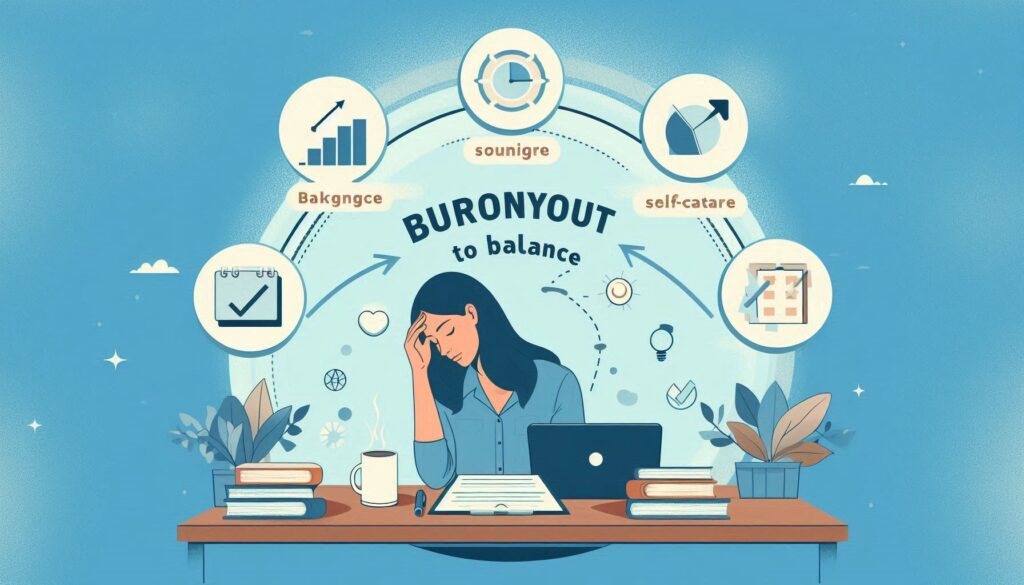
Molly S.
Business-savvy enthusiast with a mindset on growth and advocate for mental health!
Updated by Molly S. on 11/1/24

In today’s fast-paced work environment, burnout is a common challenge. Recognizing and addressing it is crucial for maintaining mental health and productivity. Here are key strategies to help you transition from burnout to balance.
1. Recognize the Signs
Stay alert to symptoms of burnout, such as chronic fatigue, irritability, and decreased motivation. Awareness is the first step to addressing the issue.
2. Set Boundaries
Establish clear work hours and communicate them with your team. Avoid checking emails or handling work tasks outside these hours to ensure time for rest.
3. Prioritize Self-Care
Incorporate activities that promote well-being, like exercise and mindfulness. Even short breaks can help refresh your mind and reduce stress.
4. Cultivate a Supportive Environment
Encourage open communication within your team about mental health. Consider regular check-ins or wellness programs to foster connection and support.
5. Practice Time Management
Use tools like calendars to prioritize tasks and break projects into manageable steps. Set realistic deadlines and schedule regular breaks.
6. Seek Professional Support
If burnout persists, consider speaking with a professional. Employee Assistance Programs (EAPs) can provide valuable counseling and support.
7. Foster Connections
Build relationships with colleagues through team-building activities or casual chats. Strong connections can enhance support and camaraderie.
8. Embrace Flexibility
If possible, explore flexible work arrangements. Tailoring your work environment can reduce stress and improve job satisfaction.
9. Engage in Continuous Learning
Seek professional development opportunities to reignite your passion for work and bring new perspectives to your role.
10. Reflect and Reassess
Regularly assess your workload and mental health. Journaling or self-assessments can help identify areas for improvement.

Conclusion
Transitioning from burnout to balance is an ongoing journey. By recognizing signs, setting boundaries, and prioritizing self-care, you can create a healthier work environment. Embrace these strategies to achieve a sustainable work-life balance.



